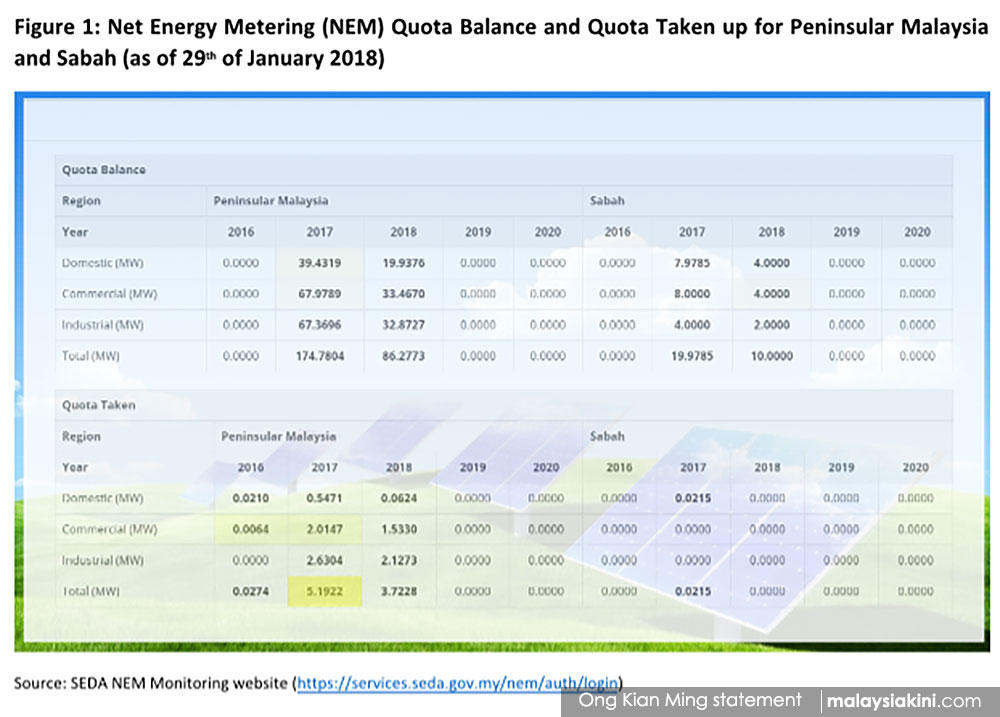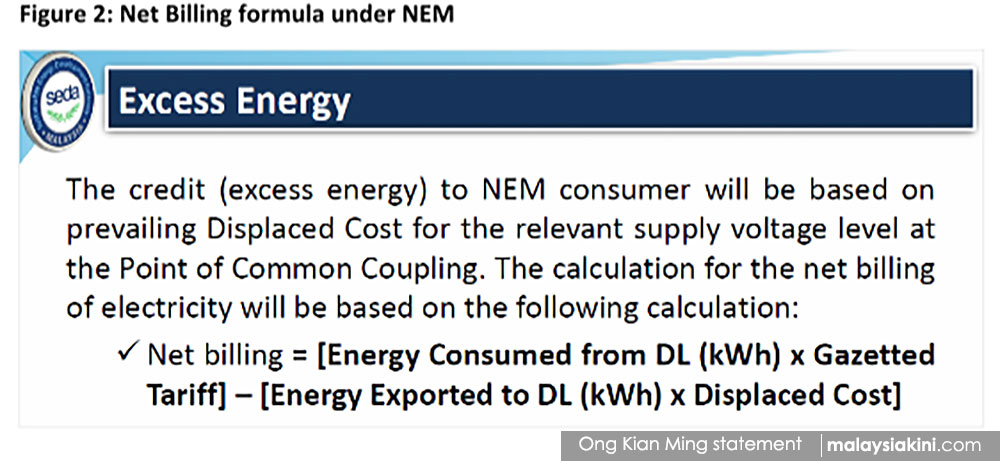MP SPEAKS | Despite the prime minister's visit to the White House in September last year, which some touted as a success, it was not able to prevent the United States from slapping a 30 percent tariff on solar photovoltaics (PVs) made in Malaysia.
This decision, announced on Jan 22, will no doubt be challenged in the World Trade Organisation.
But the extent of reliance of Malaysian-based solar PVs manufacturers on the US market also reveals the sad fact that the domestic market for solar PVs have been seriously held back by the inability of the Energy, Green Technology and Water Ministry, as well as the Sustainable Energy Development Authority (Seda) from providing the right financial incentives to grow the local demand for solar PVs.
According to the Seda website, the total installed capacity for solar PVs in Malaysia currently stands at 357 MW, which is approximately 1.3 percent of the total installed energy capacity of approximately 27,000MW.
Those in the solar PV industry regularly complain about the shortage of the Feed-in-Tariff (FiT) quota for solar PVs. Customers who want to install solar PVs on the roofs of their homes or factories regularly are disappointed with the solar PV installers tell them that they failed to obtain the FiT quota.
The move to Net Energy Metering (NEM), implemented in 2017, was supposed to "solve" the shortage of the FIT for Solar PVs by allowing consumers with solar PVs to sell directly into the grid to Tenaga Nasional Berhad (TNB) without needing to have a FIT quota.
Sadly, KeTTHa only allocated 500MW from 2016 to 2020, with a maximum of 100MW per year, as the maximum allowable capacity to be installed under NEM.
According to Seda’s NEM website, as of today (Jan 29, 2018), the total amount of the NEM quota taken up is a disappointingly low 8.69 MW for Peninsular Malaysia and Sabah.

The reason for this low uptake in the NEM applications is twofold.
Firstly, the rate at which we can "sell back" energy produced by the solar PVs is extremely low at 31 sen per kWh. (The FIT rates start at 67 sen for installations less than 4kW).
By comparison, we have to "buy" energy from TNB at a tiered tariff rate of 21.8 sen (first 200kWh), 33.4 sen (next 100kWh), 51.6 sen (next 300kWh), 54.6 sen (next 300kWh) and 57.1 sen (above 900kWh).
Since the net billing formula is the amount of electricity we use, the TNB tariff rate (which averages 38 sen per kWh) minus the amount of electricity we generate via the solar PV, the tariff rate we sell back to TNB (or otherwise known as the displaced cost which is 31 sen per kWh), as long as we use more than 300kWH per month, will see us likely having to pay TNB, rather than TNB paying us for generating electricity.

Secondly, in the event that the value of electricity generated by the solar PV system in a month is more than the value of electricity consumed, i.e., net billing is positive, this amount will be credited into the TNB account of the consumer.
The consumer cannot "take out" this credit from the TNB account and use it as cash to, let’s say, pay off the cost of installing the solar PV system. And this credit can only remain in the account for a period of 24 months, after which the credit will be forfeited.
Imagine a situation of an energy efficient household which uses less than 200kWH per month and which has installed a 12kWh system. This household may be able to generate a significant amount of energy via the solar PV system and hence, accumulate a significant amount of credits of thousands of ringgit a year.
Basically, under the current system, all of these credits be "wasted" and flushed down the drain after two years.
For both of the reasons outlined above, the rate of return for installing solar PVs under the NEM is very low, which means there is little incentive for consumers in Malaysia to install solar PVs in large numbers. The low take-up of the NEM for solar PVs means that companies selling solar PVs and companies which install solar PVs have very little business in Malaysia.
This translates into a lower number of jobs, which should have been created as a result of the expansion of the solar PV market in Malaysia. The New York Times wrote the following in an article evaluating the impact of the Trump tariff on foreign-made solar PVs:
“Solar manufacturing now represents just a fraction of the overall jobs that have developed around the solar industry. More than 260,000 Americans are employed in the sector, but fewer than 2,000 of those employed in the United States are manufacturing solar cells and modules, according to the Solar Energy Industries Association.
"Far more workers are employed in areas that underpin the use of solar technology, such as making steel racks that angle the panels toward the sun. And the bulk of workers in the solar industry install and maintain the projects, a process that is labor-intensive and hard to automate.”
By restricting the amount of the quota under the NEM, and having such a low price for solar PV generated electricity which is sold back to TNB, and for not allowing the credits to be converted into cash, KeTTHa is protecting the profits of TNB and restricting the growth of good quality jobs in solar PV sales, marketing and installation that can employ skilled Malaysians at good wages.
While the domestic market in Malaysia cannot currently replace the US market for made in Malaysia solar PVs of 3,789 MW a year, one of the concrete steps which the government can take in the meantime to lessen the impact of the hike in the US tariff is to increase the financial incentives for solar PVs in Malaysia so as to grow the domestic market.
Many people scoffed at the promise by Pakatan Harapan’s Youth Wing to create one million good quality jobs in five years of a new Harapan government. This is a clear-cut case of how some of these one million good quality jobs can be created under a Harapan government, which does not protect the excessive profits of monopolies like TNB, but values the welfare of consumers and the creation of jobs which pay good wages and are not easily automated.
ONG KIAN MING is the MP for Serdang and assistant political education director of the DAP.
The views expressed here are those of the author/contributor and do not necessarily represent the views of Malaysiakini.

